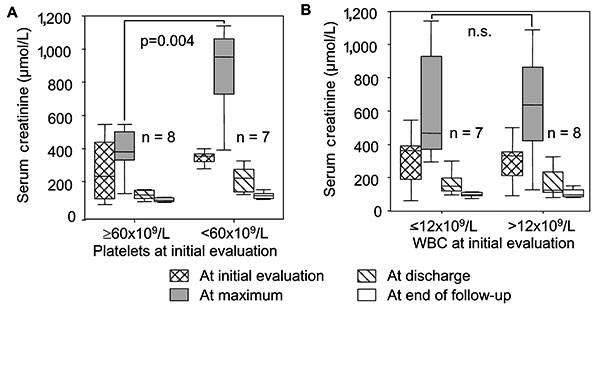Volume 10, Number 8—August 2004
Research
Thrombocytopenia and Acute Renal Failure in Puumala Hantavirus Infections
Figure 3

Figure 3. Temporal course of serum creatinine in patients with hantavirus infection, stratified according to (A) platelet count and (B) leukocyte count at initial evaluation. Platelet count, but not leukocyte count, is a significant predictor of subsequent renal failure (p = 0.004, Mann-Whitney). Box plots with median, interquartile range, minimum and maximum values are shown. n.s., not significant; WBC, leukocyte count.
Page created: March 02, 2011
Page updated: March 02, 2011
Page reviewed: March 02, 2011
The conclusions, findings, and opinions expressed by authors contributing to this journal do not necessarily reflect the official position of the U.S. Department of Health and Human Services, the Public Health Service, the Centers for Disease Control and Prevention, or the authors' affiliated institutions. Use of trade names is for identification only and does not imply endorsement by any of the groups named above.